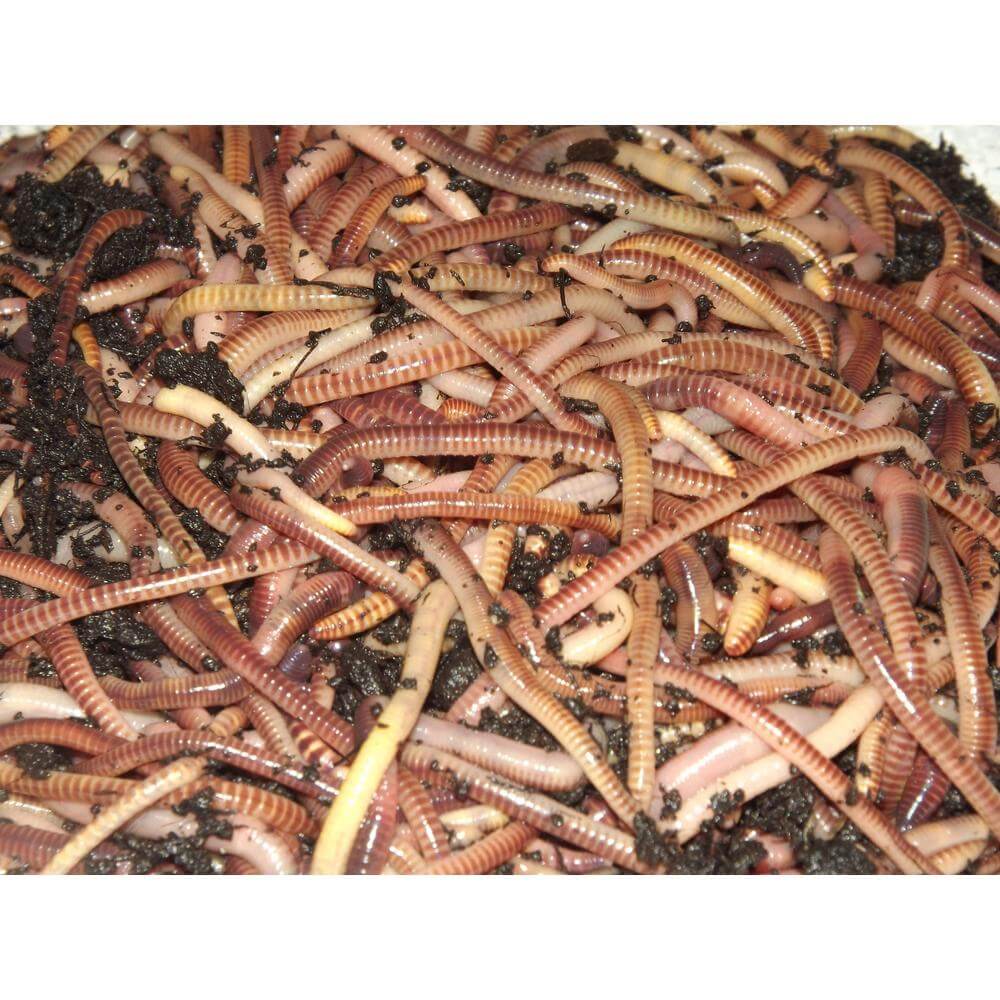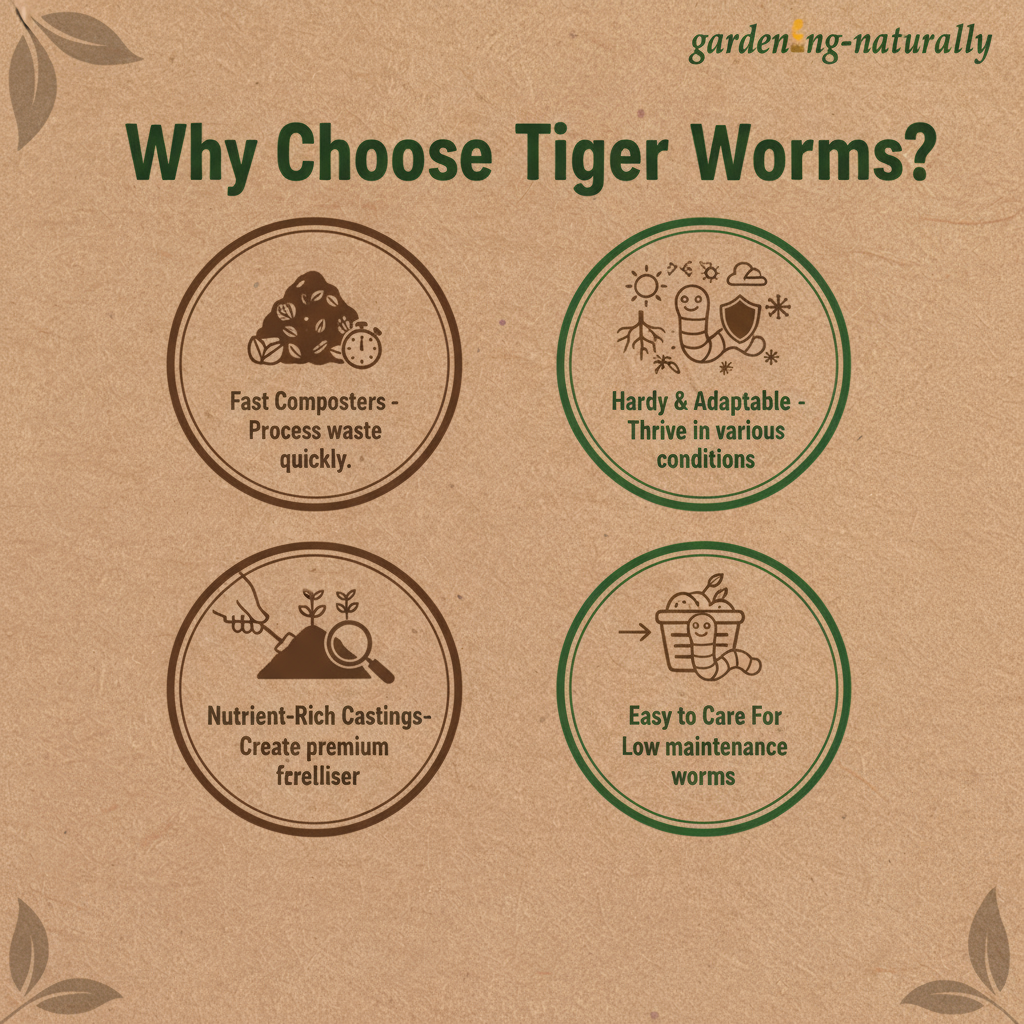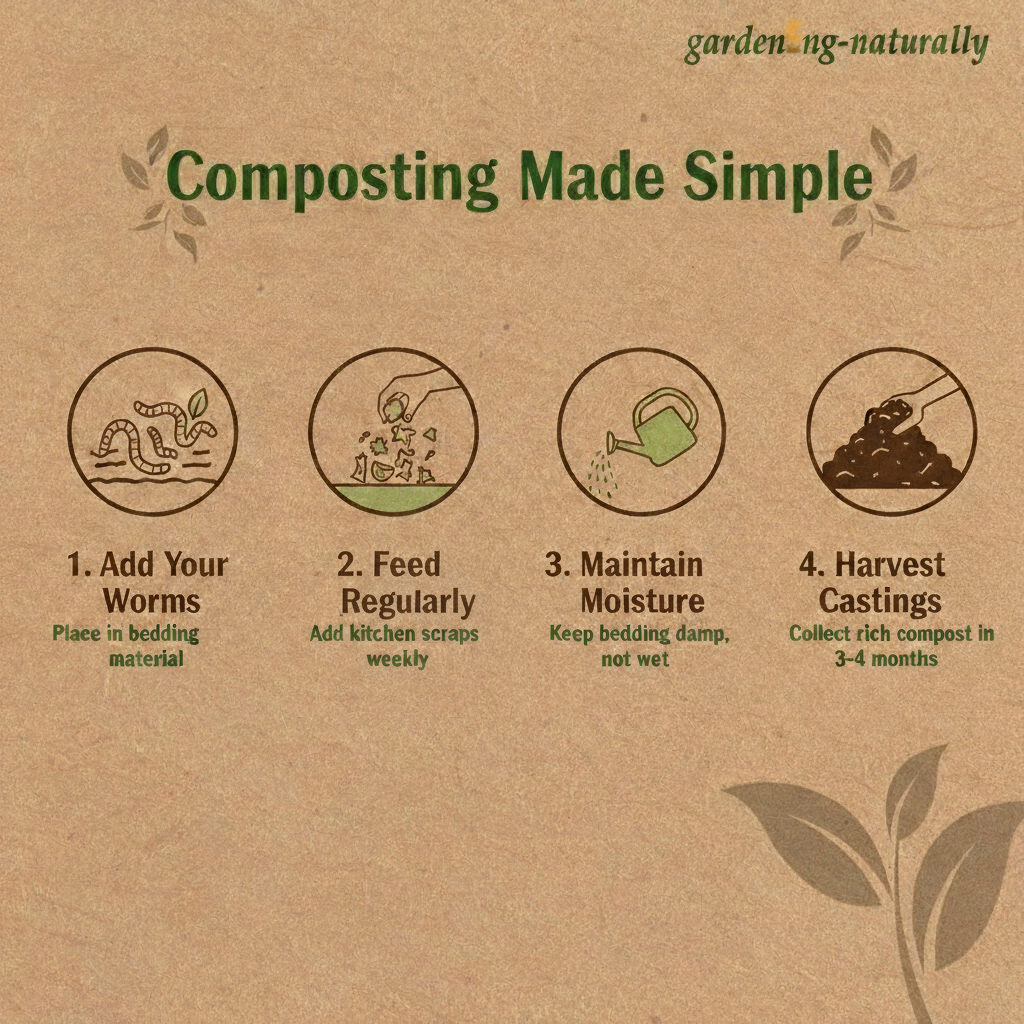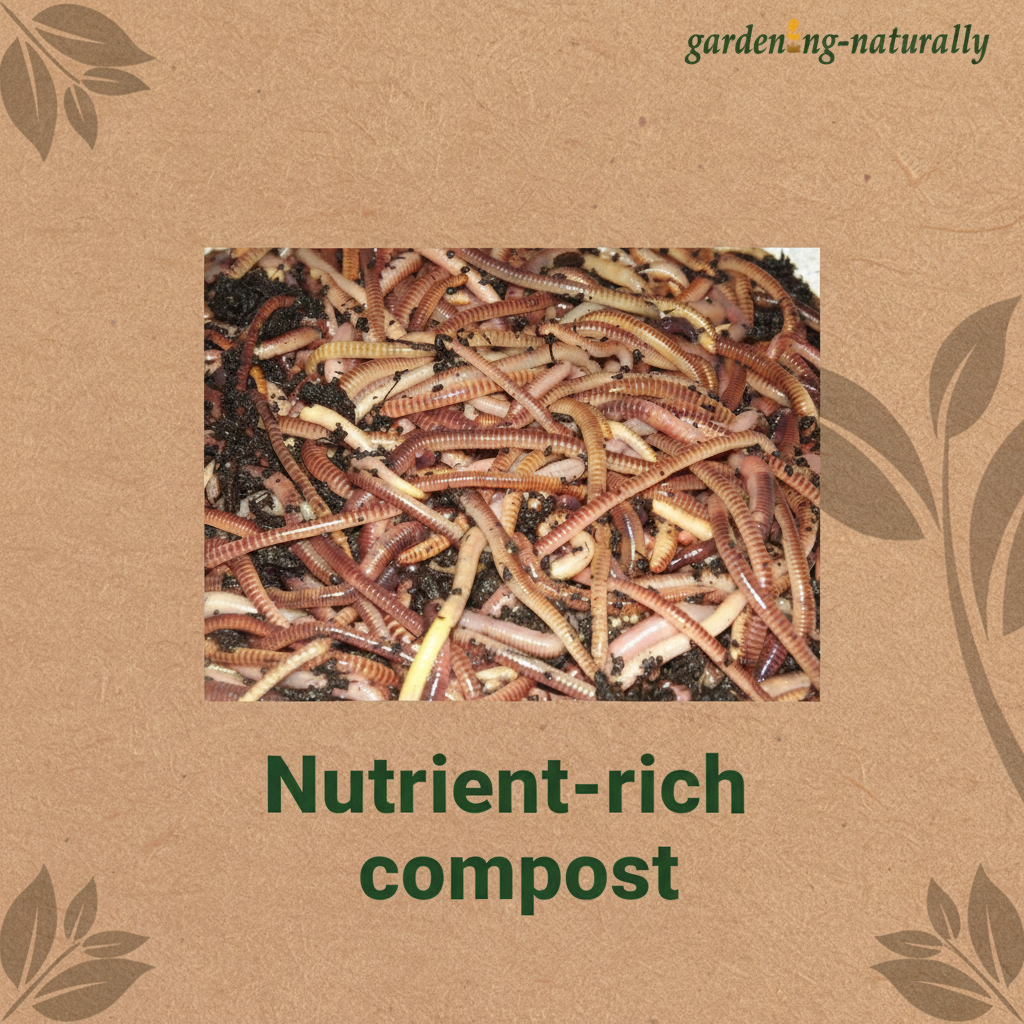Tiger Worms Ideal for Your Wormery Composter
Tiger Worms Ideal for Your Wormery Composter - 100g of Worms is backordered and will ship as soon as it is back in stock.
Tiger worms, also known as brandling worms, are ideal for use in wormeries and compost bins. They efficiently process organic waste into nutrient rich compost, making them a reliable choice for recycling kitchen and garden waste at home. These compost worms thrive in moist conditions and quickly convert food scraps into valuable material for your plants.
Tiger Worms For Composting Organic Waste In Wormeries
- Highly active compost worms that break down organic waste efficiently
- Suitable for use in home wormeries, compost bins and garden waste systems
- Produces nutrient rich compost for soil improvement and plant health
- Works well with dendrobaena worms for faster waste conversion
- Easy to introduce into existing compost or new wormery setups
Composting Worm Species And Their Roles
There are three main species that contribute to organic waste breakdown in wormeries:
- Tiger Worm (Eisenia fetida) – The most effective for composting.
- Bluenose Worm (Dendrobaena veneta) – Efficient but not as adaptable as tiger worms.
- Redworm / Red Wiggler (Eisenia andrei) – Works well but is less effective than tiger worms.
While all these worms are useful for composting, tiger worms stand out for their adaptability, tolerance to varying conditions and composting efficiency, making them the top choice for most home and garden wormeries.
Why Tiger Worms Are Used In Composting Systems
Tiger worms feed near the surface of the compost and thrive in moist, oxygen rich environments. Their ability to process large amounts of organic waste makes them ideal for both small and large compost systems. The resulting compost improves soil texture and boosts plant growth naturally.
Using Tiger Worms In A Wormery Or Compost Bin
These compost worms work best when introduced to partially decomposed organic matter. Add them to the top layer of your wormery or compost bin and keep the contents moist but not waterlogged. Regularly add small amounts of kitchen waste to maintain a steady food supply and promote worm activity.
Mixing Tiger Worms With Dendrobaena Worms For Better Results
Many gardeners use a combination of tiger worms and dendrobaena worms to create a balanced composting system. Tiger worms break down soft waste rapidly, while dendrobaenas handle tougher materials deeper in the bin. Together they speed up the composting process and create a richer end product.
How To Maintain A Healthy Wormery
Keep your wormery at a stable temperature, ideally between 15°C and 25°C. Avoid adding meat, dairy or oily foods. Cover the surface with damp newspaper or cardboard to retain moisture and protect the worms from light. When the compost is dark and crumbly, it’s ready to be used around the garden.
Sizes Available
Available in 250,g, 750g and 100g
Frequently Asked Questions
How many tiger worms do I need to start a wormery?
For a small domestic wormery, around 500g of worms is usually enough to get started. Larger systems may require 1kg or more depending on the amount of waste added.
Can tiger worms survive outdoors in winter?
Yes, they can survive in cooler temperatures, but it is best to keep the wormery insulated or indoors during very cold weather to maintain their activity.
How long does it take for the worms to produce compost?
Under good conditions, it usually takes around three to four months for the worms to convert organic waste into usable compost.
Can I mix tiger worms with dendrobaena worms?
Yes, combining both species works well as they feed at different levels of the compost, improving processing speed and compost quality.
What should I avoid feeding to tiger worms?
Avoid adding meat, dairy, citrus or oily foods as these can upset the balance of the wormery and create unpleasant odours.
How do I know when the compost is ready to use?
The compost is ready when it is dark, crumbly and has an earthy smell. You can remove the finished material and use it in pots, beds or borders around your garden.
Reviews
Reviews
Specifications
Specifications
Height (CM): 4
Width (CM): 22
Depth (CM): 28
Weight (KG): 0.25









